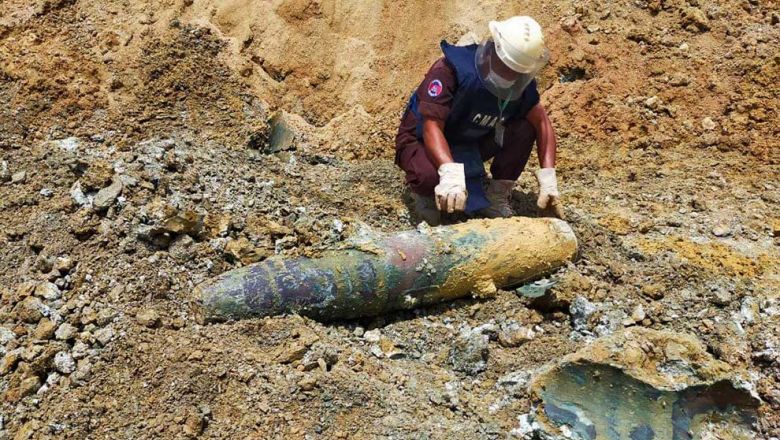10/02/2022 Cambogia
“If you ever come across anything suspicious like this item, please do not pick it up, contact your local law enforcement agency for assistance”
More than 5,000 discoveries of explosive remnants of war (ERW) were reported to the Cambodian Mine Action Centre (CMAC) in 2021, with a total of 20,000 munitions destroyed. CMAC director-general Heng Ratana told The Post on February 3 that the high figure indicated Cambodia’s remarkable success in ERW management and awareness as many more people had reported ERW they found to authorities. Ratana said that though locals would contact them about one remnant they found, the organisation often found multiple ERW nearby. “The more we searched, the more we found, he said. He added that ERW were often discovered by those who were simply going about their day. “Some people spotted them while digging on their land, while others found them near tree stumps while out on a walk,” he said, illustrating the dangers ordinary Cambodians face in their daily lives. While some munitions were neutralised and destroyed by CMAC at the site they had been discovered, others had to be moved to a safe place to be destroyed. Instead of attempting to remove it themselves, Ratana called on people to contact CMAC when they find suspicious remnants so the organisation can assess them and determine the best course of action. While there were instances in which such munitions fortunately failed to explode upon contact, it is not always the case, he said. There have been a total of 64,954 victims from 1979 to September 2021, of which 13,809 were victims of ERW, according to a report released by the Cambodian Mine Action Authority (CMAA) last year.
Photo-Source: phnompenhpost.com
If you find anything that appears to be an explosive device, do not touch it, leave it where it is and call the police. We will contact the appropriate agencies to properly dispose of the item.
Dear editors, Biography of a bomb is aimed at highlighting the danger caused by unexploded bombs. Moreover, the most important aspect is that we work completely non profit, raising awerness about this topic is what drives us. We apologize if we make use of pictures in yours articles, but we need them to put a context in how findings are done. We will (and we always do) cite source and author of the picture. We thank you for your comprehension.





